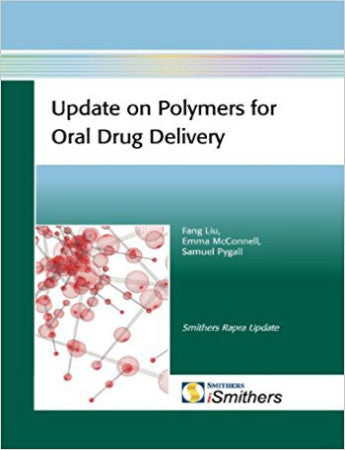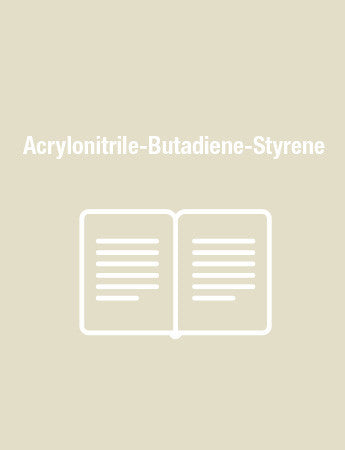Update on Polymers for Oral Drug Delivery
The preferred route for drug delivery remains the oral route, but oral drug delivery has now developed beyond traditional dosage forms such as tablets and capsules. Nowadays it is possible to use polymers to allow drugs to be targeted to specific sites in the gastrointestinal tract, and to extend the drug release profile. In addition, polymers can be engineered to allow oral delivery of such complex molecules as proteins, peptides, and even genes.
This book gives a comprehensive summary of oral drug delivery systems, both conventional and novel, and the ways in which polymers have been adapted for these systems. Particular attention is devoted to gastrointestinal physiology and the physio-chemical properties of polymers in order to understand the factors affecting their performance in practice.
This update will interest everyone involved in the pharmaceutical world, whether in academia or in industry. It will be of particular value to those responsible for designing new oral drug delivery systems involving polymers. It will provide a useful reference text both for researchers and manufacturers, and will also be a helpful introduction for students of all levels to the application of polymers in pharmacy.
1 Gastrointestinal Physiology and its Influence on Oral Drug Delivery Systems
1.1 Introduction
1.2 How the Stomach can Affect Various Polymer Dosage Forms
1.2.1 Motility and Transit of Polymer Dosage Forms in the Stomach
1.2.2 Fluid and Secretions in the Stomach
1.3 How the Small Intestine can affect Polymeric Dosage Forms
1.3.1 Fluid and Secretions in the Small Intestine
1.3.2 Transit in the Small Intestine
1.4 How the Colon can affect Polymeric Dosage Forms
1.4.1 Fluid in the Colon
1.4.2 Transit through the Colon
1.4.3 Bacteria in the Colon
1.5 The Effect of Polymers on the Gastrointestinal Tract
1.6 The Fate of Polymers in the Gut
1.7 Conclusions
References
2 Polymers for Conventional Oral Dosage Forms
2.1 Polymers for Immediate Release Granules and Tablets
2.2 Polymers for Pellet Cores
2.3 Polymers for Capsule Shells
2.4 Polymers for Immediate-release Film Coatings
2.4.1 Taste Masking
2.4.2 Moisture Barrier Coatings
2.4.3 Oxygen Barrier Coatings
2.5 Conclusions
3 Polymers for Extended or Sustained Drug Delivery
3.1 Introduction
3.2 Key Concepts in Controlled Drug Delivery
3.3 Diffusion-controlled Drug Delivery Systems
3.3.1 Reservoir Drug Delivery Systems
3.3.2 Inert Matrix Systems for Controlled Drug Release
3.4 Swelling-controlled Release Systems
3.4.1 Overview
3.4.2 Drug Release from Swelling Systems
3.4.3 Case I Diffusion
3.4.4 Case II Diffusion
3.5 Osmotic Pump Systems
3.5.1 Drug Solubility
3.5.2 Osmotic Pressure
3.5.3 Orifice Size
3.5.4 The Semi-permeable Membrane
3.6 Polysaccharides in Oral Drug Delivery
3.6.1 Starch
3.6.2 Cellulose
3.6.3 Chitosan
3.6.4 Alginates
3.6.5 Xanthan Gum
3.6.6 Guar Gum and Locust Bean Gum
3.7 Hydrogels for Drug Delivery
3.7.1 Stimulus-sensitive Hydrogels
3.7.2 pH- and Temperature-triggered Drug Delivery
3.7.3 Future Directions in Hydrogel Development
3.8 Molecular Recognition as a Concept for Oral Drug Delivery
3.9 Conclusions
References
4 Site-specific Drug Delivery: Polymers for Gastroretention
4.1 Gastroretention: The Challenges and Benefits
4.2 How can Gastroretention be Achieved?
4.2.1 Size-increasing Systems
4.2.2 Floating Systems
4.2.3 Mucoadhesive Systems
4.3 Conclusions
References
5 Enteric Polymers for Small Intestinal Drug Delivery
5.1 Polymers for Enteric Coatings
5.1.1 Cellulose-based Enteric Polymers
5.1.2 Polyvinyl Derivatives
5.1.3 Polymethacrylates
5.1.4 Aqueous Enteric Coatings
5.2 Factors Influencing Enteric Polymer Dissolution
5.2.1 Polymer Structure
5.2.2 Dissolution Media
5.3 In vivo Performance of Enteric Coatings
5.4 Conclusions
References
6 Polymers for Modified-release Site-specific Drug Delivery to the Colon
6.1 Introduction
6.2 pH-triggered Enteric Drug Delivery to the Colon
6.3 Microbially-triggered Colonic Delivery
6.4 Time-dependent Colonic Delivery
6.4.1 Pressure-controlled Colonic Delivery
6.5 Combination Approaches to Colonic Delivery
6.6 Conclusions
References
7 Polymers for Site-specific Drug Delivery: Mucoadhesion
7.1 Mucoadhesion as a Drug Delivery Concept
7.2 The Mucus Layer
7.3 Mucoadhesion
7.4 Polymers Providing Mucoadhesion
7.4.1 Natural Polymers
7.4.2 Semi-synthetic Polymers
7.4.3 Acrylic Acid Derivatives
7.4.4 Thiolated Polymers or Thiomers
7.4.5 PEGylated polymers
7.4.6 N-(2-Hydroxypropyl) Methacrylamide Copolymers
7.5 Polymer Factors Influencing Mucoadhesive Potential
7.5.1 Molecular Weight
7.5.2 Polymer Flexibility and Conformation
7.5.3 Polymer Cohesiveness
7.5.4 Polymer Concentration
7.5.5 Chemical Structure of the Polymer
7.5.6 Hydrophilicity of a Polymer
7.6 In Vivo Examples of Mucoadhesion
7.6.1 The Stomach
7.6.2 The Small Intestine
7.6.3 The Colon
7.7 Conclusions
References
8 Micro- and Nanoparticles for Oral Protein and Gene Delivery
8.1 Protein and Gene Therapeutics
8.2 Physiological Barriers in Oral Protein and Gene Delivery
8.2.1 Degradation in the Gastrointestinal Environment
8.2.2 Permeability Barriers
8.3 Polymers used in Microparticles and Nanoparticles
8.4 Preparation Methods
8.4.1 Emulsion Solvent Evaporation
8.4.2 Emulsion Solvent Diffusion or Displacement
8.4.3 Salting Out
8.4.4 Ionic Gelation
8.4.5 Complex Coacervation
8.5 Factors Affecting the Mucosal Uptake of Particles
8.5.1 Transport of Particles across Intestinal Mucosa
8.5.2 Particle Size
8.5.3 Surface Properties
8.5.4 In Vivo Results
8.6 Conclusions
References
Appendix
Abbreviations
Index
1.1 Introduction
1.2 How the Stomach can Affect Various Polymer Dosage Forms
1.2.1 Motility and Transit of Polymer Dosage Forms in the Stomach
1.2.2 Fluid and Secretions in the Stomach
1.3 How the Small Intestine can affect Polymeric Dosage Forms
1.3.1 Fluid and Secretions in the Small Intestine
1.3.2 Transit in the Small Intestine
1.4 How the Colon can affect Polymeric Dosage Forms
1.4.1 Fluid in the Colon
1.4.2 Transit through the Colon
1.4.3 Bacteria in the Colon
1.5 The Effect of Polymers on the Gastrointestinal Tract
1.6 The Fate of Polymers in the Gut
1.7 Conclusions
References
2 Polymers for Conventional Oral Dosage Forms
2.1 Polymers for Immediate Release Granules and Tablets
2.2 Polymers for Pellet Cores
2.3 Polymers for Capsule Shells
2.4 Polymers for Immediate-release Film Coatings
2.4.1 Taste Masking
2.4.2 Moisture Barrier Coatings
2.4.3 Oxygen Barrier Coatings
2.5 Conclusions
3 Polymers for Extended or Sustained Drug Delivery
3.1 Introduction
3.2 Key Concepts in Controlled Drug Delivery
3.3 Diffusion-controlled Drug Delivery Systems
3.3.1 Reservoir Drug Delivery Systems
3.3.2 Inert Matrix Systems for Controlled Drug Release
3.4 Swelling-controlled Release Systems
3.4.1 Overview
3.4.2 Drug Release from Swelling Systems
3.4.3 Case I Diffusion
3.4.4 Case II Diffusion
3.5 Osmotic Pump Systems
3.5.1 Drug Solubility
3.5.2 Osmotic Pressure
3.5.3 Orifice Size
3.5.4 The Semi-permeable Membrane
3.6 Polysaccharides in Oral Drug Delivery
3.6.1 Starch
3.6.2 Cellulose
3.6.3 Chitosan
3.6.4 Alginates
3.6.5 Xanthan Gum
3.6.6 Guar Gum and Locust Bean Gum
3.7 Hydrogels for Drug Delivery
3.7.1 Stimulus-sensitive Hydrogels
3.7.2 pH- and Temperature-triggered Drug Delivery
3.7.3 Future Directions in Hydrogel Development
3.8 Molecular Recognition as a Concept for Oral Drug Delivery
3.9 Conclusions
References
4 Site-specific Drug Delivery: Polymers for Gastroretention
4.1 Gastroretention: The Challenges and Benefits
4.2 How can Gastroretention be Achieved?
4.2.1 Size-increasing Systems
4.2.2 Floating Systems
4.2.3 Mucoadhesive Systems
4.3 Conclusions
References
5 Enteric Polymers for Small Intestinal Drug Delivery
5.1 Polymers for Enteric Coatings
5.1.1 Cellulose-based Enteric Polymers
5.1.2 Polyvinyl Derivatives
5.1.3 Polymethacrylates
5.1.4 Aqueous Enteric Coatings
5.2 Factors Influencing Enteric Polymer Dissolution
5.2.1 Polymer Structure
5.2.2 Dissolution Media
5.3 In vivo Performance of Enteric Coatings
5.4 Conclusions
References
6 Polymers for Modified-release Site-specific Drug Delivery to the Colon
6.1 Introduction
6.2 pH-triggered Enteric Drug Delivery to the Colon
6.3 Microbially-triggered Colonic Delivery
6.4 Time-dependent Colonic Delivery
6.4.1 Pressure-controlled Colonic Delivery
6.5 Combination Approaches to Colonic Delivery
6.6 Conclusions
References
7 Polymers for Site-specific Drug Delivery: Mucoadhesion
7.1 Mucoadhesion as a Drug Delivery Concept
7.2 The Mucus Layer
7.3 Mucoadhesion
7.4 Polymers Providing Mucoadhesion
7.4.1 Natural Polymers
7.4.2 Semi-synthetic Polymers
7.4.3 Acrylic Acid Derivatives
7.4.4 Thiolated Polymers or Thiomers
7.4.5 PEGylated polymers
7.4.6 N-(2-Hydroxypropyl) Methacrylamide Copolymers
7.5 Polymer Factors Influencing Mucoadhesive Potential
7.5.1 Molecular Weight
7.5.2 Polymer Flexibility and Conformation
7.5.3 Polymer Cohesiveness
7.5.4 Polymer Concentration
7.5.5 Chemical Structure of the Polymer
7.5.6 Hydrophilicity of a Polymer
7.6 In Vivo Examples of Mucoadhesion
7.6.1 The Stomach
7.6.2 The Small Intestine
7.6.3 The Colon
7.7 Conclusions
References
8 Micro- and Nanoparticles for Oral Protein and Gene Delivery
8.1 Protein and Gene Therapeutics
8.2 Physiological Barriers in Oral Protein and Gene Delivery
8.2.1 Degradation in the Gastrointestinal Environment
8.2.2 Permeability Barriers
8.3 Polymers used in Microparticles and Nanoparticles
8.4 Preparation Methods
8.4.1 Emulsion Solvent Evaporation
8.4.2 Emulsion Solvent Diffusion or Displacement
8.4.3 Salting Out
8.4.4 Ionic Gelation
8.4.5 Complex Coacervation
8.5 Factors Affecting the Mucosal Uptake of Particles
8.5.1 Transport of Particles across Intestinal Mucosa
8.5.2 Particle Size
8.5.3 Surface Properties
8.5.4 In Vivo Results
8.6 Conclusions
References
Appendix
Abbreviations
Index




